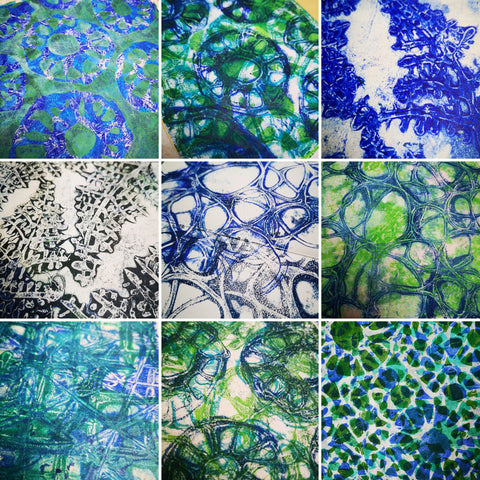
Gelli plates have become a popular tool in the world of art, particularly in creating patterns and collage papers. A gelli plate is a flexible printing surface that allows artists to easily transfer designs onto various types of paper or other materials.
I've used a number of different papers in the past; thick cartridge papers, photocopier papers and deli paper but my new favourite is teabag paper as it's smooth and lightweight, great for collaging but strong and this ensures it doesn't tear or separate on the plate.

One of the main advantages of using a gelli plate is its ability to create beautiful and intricate patterns with ease. The surface of the plate has a gel-like consistency, which allows for easy manipulation and control over the desired pattern or texture. Artists can experiment with different tools, such as stencils, brushes, or even found objects, to create interesting textures on the surface of the gelli plate to create visually interesting designs. These textures are then transferred onto paper when it is pressed onto the plate.

When it comes to collage papers, gelli plates offer endless possibilities. Artists can experiment with different types of paper, including teabag paper which adds an interesting texture and organic feel to collages. By applying paint or ink onto the gelli plate and then pressing the teabag paper onto it, you can create beautiful and one-of-a-kind collage papers that can be used in mixed media projects or as standalone pieces.
Watch the video to see me creating a selection of different Gelli prints with the stencil I created in the previous blog.


If you would like to try out teabag paper with your gelli printing you can find it in my shop here.
